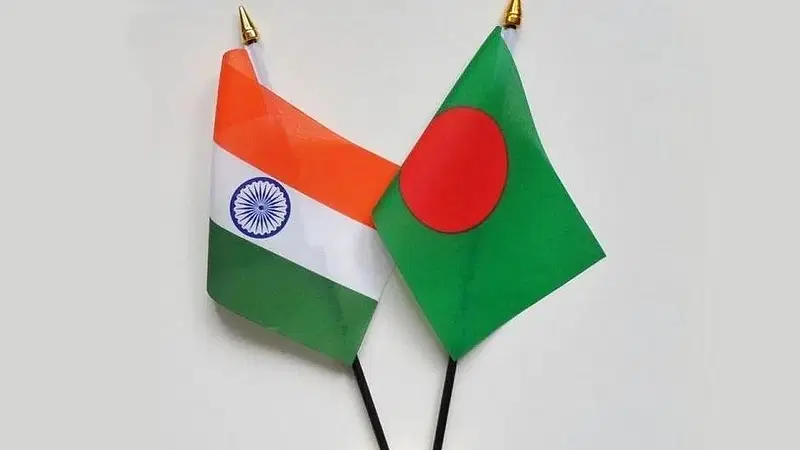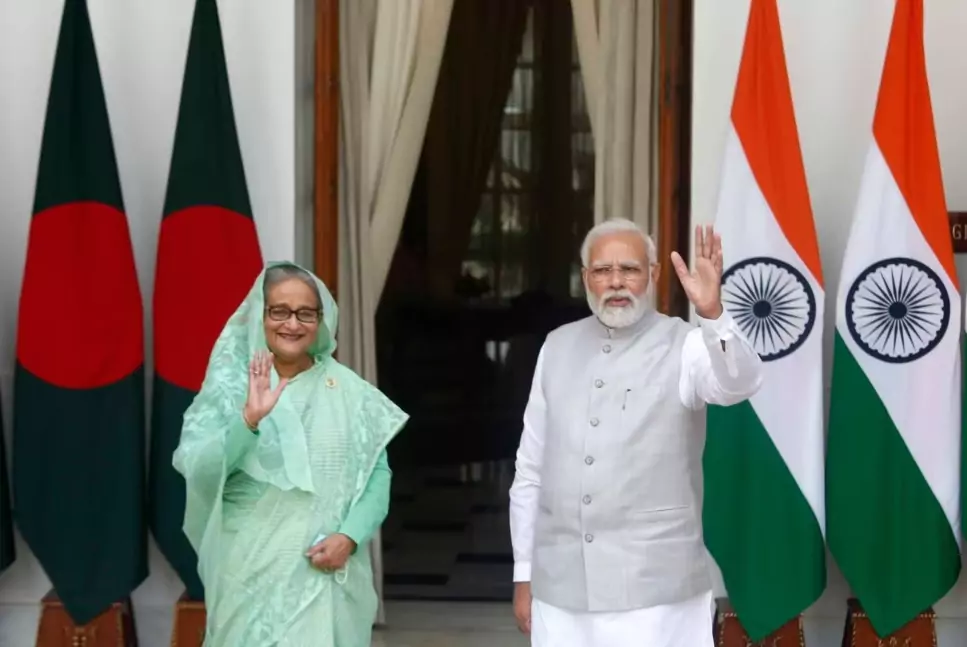India - Bangladesh Relations
Historical Background (1971–1975):
- 1971 Liberation War: India played a decisive role in Bangladesh’s independence from Pakistan, creating a deep sense of gratitude and camaraderie in Bangladesh.
- 1972 Indo-Bangla Treaty of Friendship: Signed by Indira Gandhi and Sheikh Mujibur Rahman, this cemented early diplomatic ties.
- 1975: The assassination of Mujibur Rahman caused political instability. Subsequent military regimes leaned towards Pakistan and China, straining ties with India.
Transition Period (1990s): Democratic Revival and Warming Ties
- Return of democracy in Bangladesh helped restore relations.
- 1996: The Awami League under Sheikh Hasina came to power.
- Ganga Water Sharing Treaty (1996): A milestone agreement resolving long-pending water-sharing issues over the Ganges River, marking renewed cooperation.
Mixed Era (2000s):
- Major issues:
- Cross-border insurgency
- Trade imbalances
- Border management problems
- Despite tensions, economic and infrastructural cooperation grew.
- India supported energy and transport projects in Bangladesh.
Landmark Progress (2010s): Strong Diplomatic Gains
- 2015 Land Boundary Agreement (LBA): Historic resolution of border disputes by exchanging enclaves, enhancing local connectivity and reducing border tensions.
- Deepening of economic engagement, including:
- Lines of credit for infrastructure
- Cross-border electricity trade
- Increased trade in textiles and agriculture
Current Trends (2020s): Cooperation with Caution
- Ongoing Initiatives:
- CEPA (Comprehensive Economic Partnership Agreement) negotiations
- Infrastructure connectivity projects like Akhaura-Agartala rail link
- Challenges:
- Domestic political turmoil in Bangladesh, especially Sheikh Hasina’s 2024 exile
- Accusations of Indian interference in Bangladesh's internal politics

Trade Relations: Backbone of Bilateral Ties
- Trade Volume (2022–23): $15.9 billion
- India exports: $13.7B
- Bangladesh exports: $2.2B (mainly RMG, jute, fish, leather)
- Imbalance: Trade heavily favors India; Bangladesh seeks corrective steps.
- Raw Material Dependency: Bangladesh’s RMG sector depends on Indian cotton and yarn.
- Border Trade: 4,096 km shared border aids land trade via ports like Petrapole–Benapole.
Connectivity & Tariff Preferences
- Projects: BBIN Motor Vehicle Agreement, rail/river route revivals
- Bangladesh enjoys duty-free, quota-free access under SAFTA
- Indian Lines of Credit support trade infrastructure: ports, roads, power lines
Challenges and Concerns
- Non-tariff barriers, red tape at land ports, and protectionist policies in Bangladesh (e.g., import restrictions on yarn)
- Trade deficit pressures Bangladesh to demand better market access
- Balancing open trade vs protecting local industries remains a key policy tension
Geopolitical Relevance
- Bangladesh's LDC graduation by 2026 makes Indo-Bangla trade ties crucial for sustainable economic growth
- Strategic for India’s Act East Policy and regional connectivity initiatives
What is LDC?
- LDC Graduation refers to a country's transition out of the "Least Developed Country" (LDC) category as defined by the United Nations.
- LDCs are countries that face severe structural impediments to sustainable development, and they are identified based on three main criteria:
- Income Level (Gross National Income per capita)
- Human Assets (health, education, nutrition indicators)
- Economic & Environmental Vulnerability (exposure to shocks)
- LDC graduation means a country has met specific thresholds in two of the three above criteria in two successive triennial reviews by the UN Committee for Development Policy (CDP).
- In simple terms, the country is no longer considered to be in the "least developed" category, and it "graduates" to developing country status.
There are currently 45 countries in the LDC category (as of early 2025), mostly from Africa and Asia.
What is LDC Graduation?
A Relationship in Transition
- India-Bangladesh relations have evolved from liberation-era friendship to a complex interplay of economic interdependence and political sensitivity.
- Sustained dialogue, mutual respect, and careful diplomacy are key to future cooperation.













